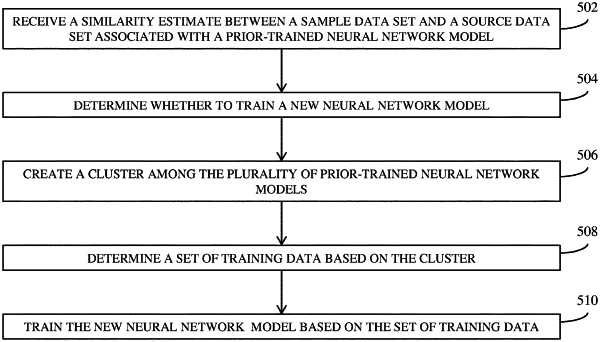| CPC G06N 3/08 (2013.01) [G06N 3/04 (2013.01)] | 20 Claims |

|
8. A system comprising:
a hardware processor;
a memory device coupled with the hardware processor;
the hardware processor operable to at least:
receive a similarity estimate between a sample data set and a source data set, wherein the sample data set is associated with a target machine learning task, wherein the source data set is associated with a prior-trained neural network model and was used as a training data set used in training the prior-trained neural network model, wherein a plurality of similarity estimates is received corresponding to a plurality of source data sets associated with a plurality of prior-trained neural network models, the similarity estimate determined based on outputs of a hidden layer of the prior-trained neural network model generated using the sample data set and outputs of the hidden layer of the prior-trained neural network model generated using the source data set, each of the plurality of similarity estimates determined based on a distance between the sample data set and a corresponding one of the plurality of source data sets;
determine, at least based on the similarity estimates being above a predefined distance threshold, to train a new neural network model, the similarity estimates being above the predefined distance indicating a gap in areas covered by the source data sets used in training the plurality of prior-trained neural network models;
responsive to determining to train the new neural network model, create a cluster among the plurality of prior-trained neural network models by at least running the plurality of prior-trained neural network models using the sample data set, clustering the prior-trained neural network models into different clusters using activations of a hidden layer of the prior-trained neural network model generated using the sample data set, and selecting the cluster closest to the sample data set;
determine a set of training data based on the cluster, wherein source data sets used in training a plurality of prior-trained neural network models in the cluster are combined for use as at least part of the set of training data; and
train the new neural network model based on the set of training data.
|